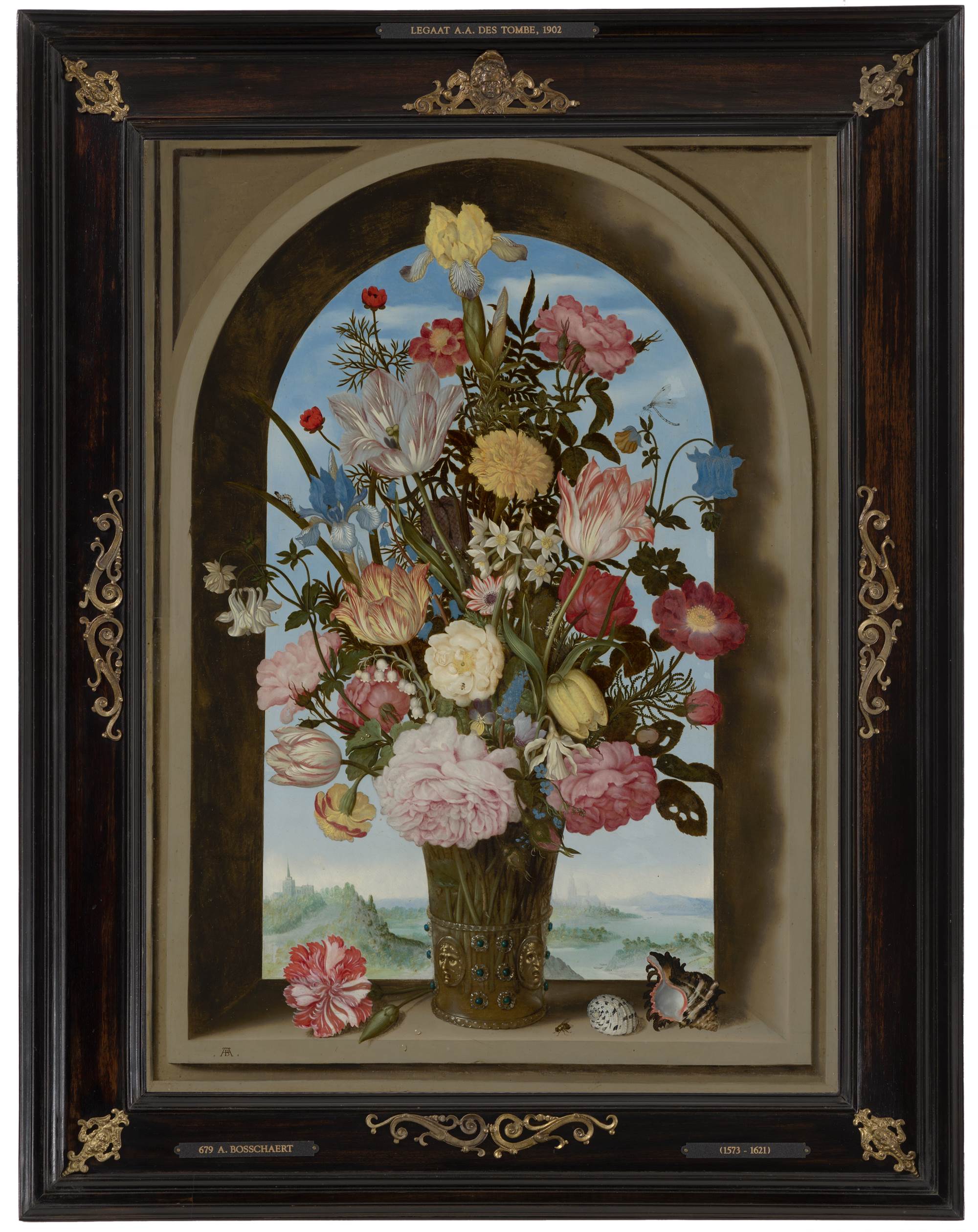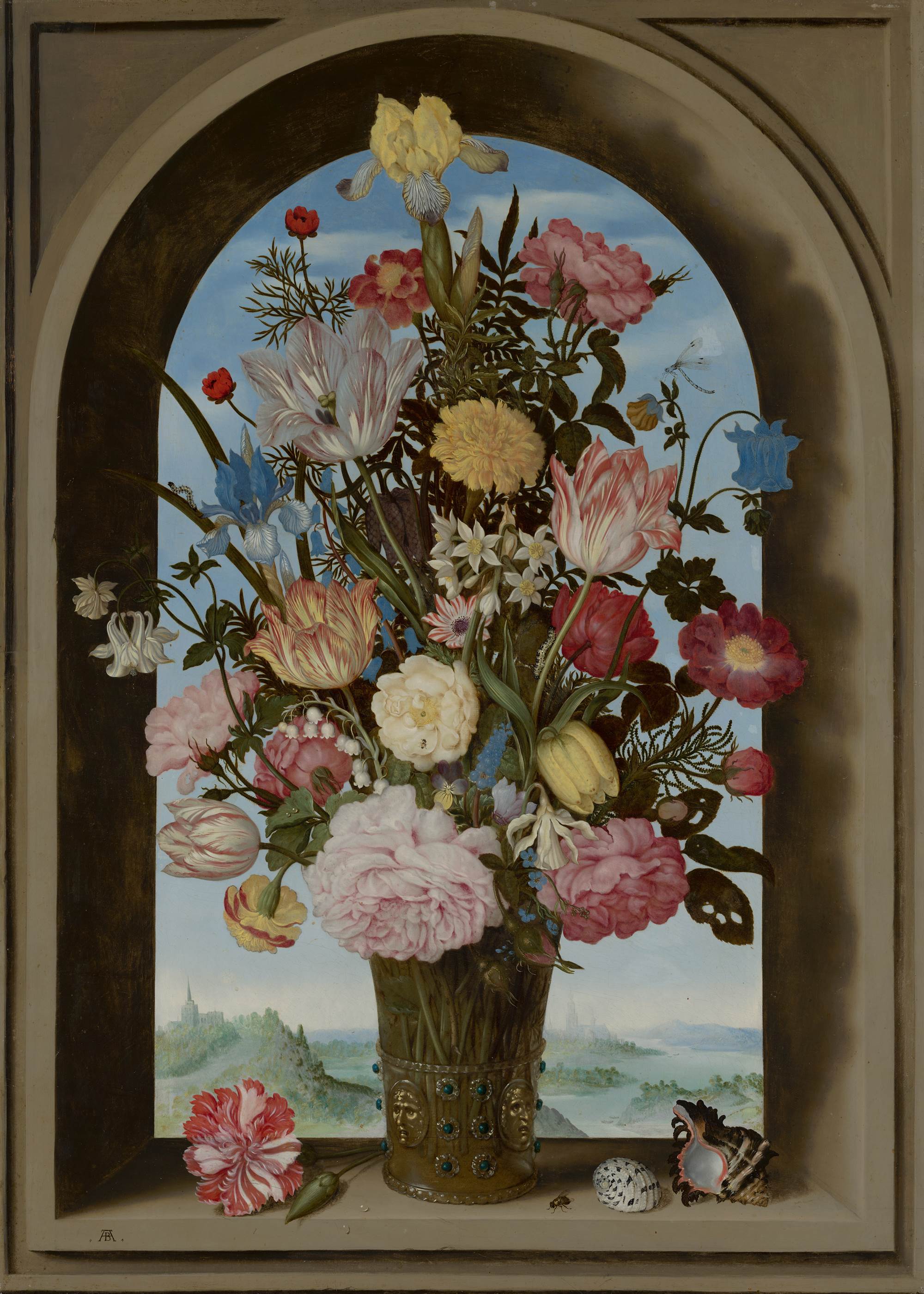This spectacular flower still life by Ambrosius Bosschaert is one of the masterpieces in his oeuvre. Tulips, roses, columbine, iris or carnations – all thirty flowers are very faithfully rendered, each with its own specific features. The lighting is even and all the flowers are very visibly and frontally presented, the only exception being the fritillary which is partially concealed among the stems. The keenness of Bosschaert’s artistic eye is underscored by minute details, such as a tiny beetle on the white rose in the middle or the dewdrops on the windowsill.
The flowers, the majority of which are foreign and rare, are arranged in a remarkable glass decorated with masks. The vase and flowers are set in a stone window, which nicely frames the bouquet. Usually, such niches are closed off at the back, but Bosschaert opened it up affording a vista of a sweeping mountainous landscape with a broadly winding river. Bosschaert was the only master to paint bouquets with a landscape in the background. Such a landscape, representing the world as it were, accords with the fact that the flowers came from far and near. Bosschaert may have derived this idea from prints, where it had earlier been introduced. Oddly, he overlooked the fact that with such an open window light would also pour in from back to front; the shadows we see are all caused by a source of light situated at the left front. This once again demonstrates that such a bouquet is a constructed reality in which the flowers, it is true, were painted from nature, while the composition as a whole sprang from the artist’s imagination.
Bosschaert was born in Antwerp, but moved with his parents to Middelburg at a young age. There he became the first specialist in the area of bouquets. He must have profited greatly from the botanists and garden enthusiasts living in Middelburg at that time. One of them, Johan Somer, in 1597 sent the famous botanist Carolus Clusius – then in Leiden – a ‘likeness’ of the yellow fritillary that had bloomed in his garden. It is not known who painted this ‘flower portrait’ but it could have been Bosschaert, for this rare blossom recurs in several of his painted bouquets, including this one in the Mauritshuis. Bosschaert left Middelburg around 1615, subsequently living in Bergen op Zoom (1615), Utrecht (1616-1619) and then Breda (1619-1621). This means that he painted this flower piece, which is datable to around 1618, either in Utrecht or Breda.
Bosschaert signed his paintings in a monogram based on that of the German artist Albrecht Dürer (1471-1528). This is very telling. Evidently, as a flower specialist he felt related to this famous artist who – a century earlier – had been one of the first to observe nature closely.
(this is a reworked version of a text published in: E. Runia, Flowers in the Mauritshuis, The Hague 2007, pp. 40-43)









